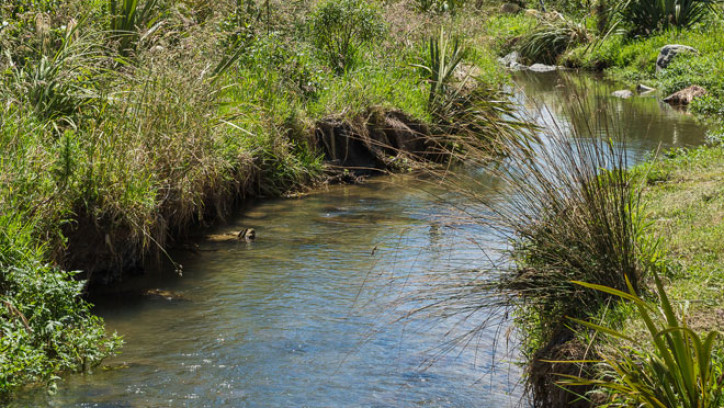Working with site landforms and waterways
Last updated: 9 August 2023

Getting a great home can mean working with your site's natural features, rather than against them.
Tune into your environment
The slope and contours of a site will influence your access to sun and views, your privacy and your exposure to shading and wind. Ground stability and waterways will influence the design and structure of your home or extension.
By taking landforms and waterways into account, you'll get a home that:
- is less likely to flood
- is drier and easier to heat
- is better protected from the elements
- has less impact on the environment.
Whether you're building or renovating consider the site’s landforms and waterways before you buy a property, and early in the design process.
Slope and topography
Sites on the north side of hills or with ground sloping down to the north will receive greater exposure to the sun. This will make it drier and easier to heat in winter.
Passive heating has further information.
Slope and topography can also affect:
- privacy – whether your neighbours will be able to see into your home or section (and vice versa)
- shadowing – whether hillsides or trees will block the sun, particularly in winter when the sun is lower on the horizon
- wind exposure
- wind strength – for example, wind speeds up as it passes over or between hills, or through valleys (this is the 'wind tunnel' effect)
- the geological make up of land
- views.
You can find local topographical maps at regional and local councils, or from Land Information New Zealand
These will give you information about the topography of the surrounding area.
Try to work with the site's existing landforms to avoid expensive and environmentally damaging earthworks.
Exterior design has more information about designing a building or renovation to fit your site.
House orientation explains the benefits of positioning a home to make the most of the sun.
Ground stability
Before you build or extend, you'll need to know that the ground is stable (the property doesn't suffer from slips or erosion, whether the site is prone to liquefaction and that the house isn't likely to settle).
Site stability may affect the type of foundations and materials you need to use. In some cases it may be more expensive to use heavy materials such as brick or concrete compared to lightweight construction.
For new subdivisions, ask the developer for a copy of the engineer's report, and any other documents that were the basis for resource consent. This should confirm that the land is suitable for residential development and that any earthworks have been completed to the required standard.
You can also find out about any past earthworks, the presence of old landfills and any other site stability issues your council is aware of by requesting a Land Information Memorandum from the council.
If you have doubts, it's worth consulting an engineer or asking your architect to commission a report.
Stormwater
Uncontrolled stormwater runoff can cause erosion and flooding, affecting you and your neighbours. It can be worsened by:
- the slope and steepness of your site and surrounding land will affect the amount and direction of stormwater runoff
- stormwater entering from other properties, especially if they are higher than yours
- roads above the site discharging stormwater onto your site
- the amount of paving
- proximity to natural waterways and the sea.
Note that plants and trees can help absorb stormwater runoff and prevent erosion. A site that's been cleared of vegetation may be more susceptible to erosion and flooding.
Managing stormwater has more information about dealing with stormwater on your property.
Building a more resilient home has more information on flooding and erosion.
Legal requirements
You may need resource consent for activity that affects the environment, landforms or waterways or coastal activities, or involves moving a large amount of soil from the site.
This could include:
- levelling a site
- cutting and filling part of a site
- removing trees
- activities that result in sediment being discharged into streams or other waterways.
Whether you'll need a resource consent depends on what you want to do on your site, and how that activity is classified in your council's local district or regional plan. Every council plan is different.
The Ministry for the Environment's website has a useful guide on how to apply for resource consent:
Applying for a resource consent
Before you begin
To ensure you know about any special rules or requirements, including resource consent, contact your local council.
Check the Local Government NZ website for council contact details.